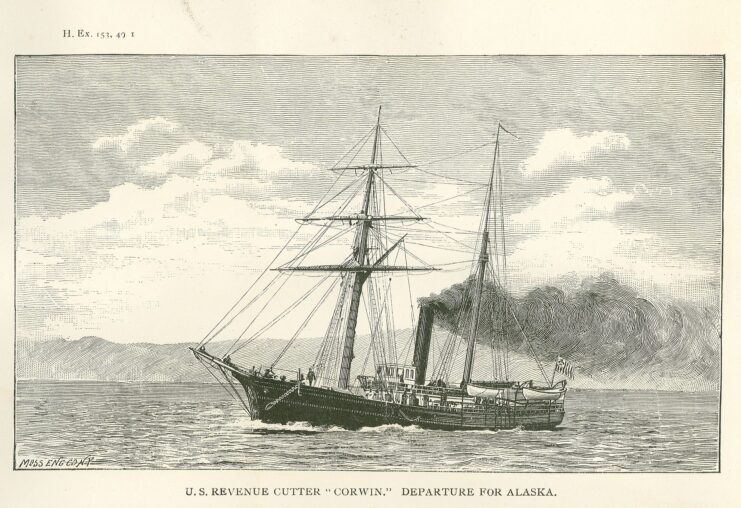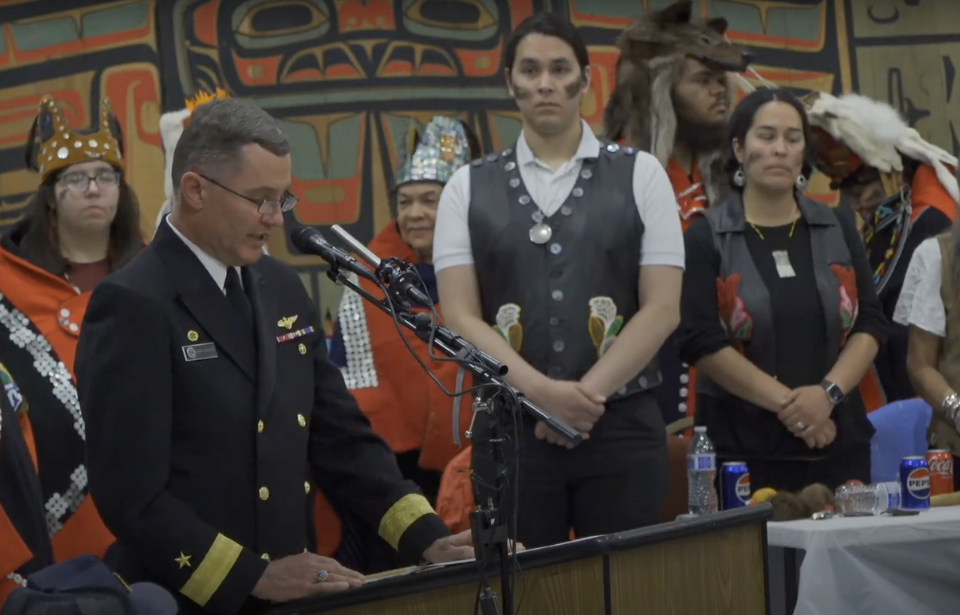Over 140 years after the US Navy obliterated the village of Angoon, Alaska, the service has issued a formal apology. The long-awaited event marks an official acknowledgement of the destruction and trauma caused by the unsanctioned attack by naval personnel back in 1882 and allows the Tlingit people to enter a period of healing.

On October 26, 1882, the US Navy, under the command of Cmdr. Edgar C. Merriman, shelled the Tlingit village of Angoon. At this time, tensions were high between the US military and the Indigenous population, as both had different views and methods when it came to upholding the law.
According to a report by the US Navy, two employees were taken hostage following the death of a Tlingit shaman, who was aboard a Northwest Trading Company whaling ship. The villages requested 200 blankets for their safe return, with the payment intended to serve as retribution for the shaman’s death.
Tlingit accounts deny that any hostages were taken.
Days after the incident, the US Navy deployed the USRC Thomas Corwin, upon which were a howitzer and a gatling gun. Upon Merriman’s arrival on October 25, the hostages were freed, with the commander ordering the Tlingit people give the naval crew 400 blankets as a “punishment and guarantee of future good behavior.” They had up until the next day to deliver them.
The tight deadline meant the villagers were only able to gather 81 blankets. In response, Merriman began shelling Angoon. At the same time, the Marines aboard Thomas Corwin came ashore and destroyed houses, food stores and canoes.
While most residents were able to escape the destruction, six children died from smoke inhalation. An unknown number of Tlingit villagers also perished in the winter that followed the bombardment, due to a lack of shelter and supplies.

Calls for a formal apology for what occurred on Angoon have been ongoing since the 1980s. In 1982, a letter to the Kootznoowoo Heritage Foundation from the US Navy said, “The destruction of Angoon should never have happened, and it was an unfortunate event in our history.”
A decade prior, Angoon had received $90,000 from a suit filed against the US government in relation to the bombardment.
It took until June 2024, for the Navy to agree to issue a proper apology. It was delivered on October 26 at the Angoon High School Gym, which was packed with hundreds of Tlingit people from across southeast Alaska. Thousands more watched via live stream.
Delivering the apology was Rear Adm. Mark Sucato, who told the crowd, “The Navy recognizes the pain and suffering inflicted upon the Tlingit people, and we acknowledge these wrongful actions resulted in the loss of life, the loss of resources, the loss of culture, and created and inflicted intergenerational trauma on these clans.”
He added, “The Navy takes the significance of this action very, very seriously and knows an apology is long overdue.”
Following Sucato’s speech, the crowd exclaimed, “Gunalchéesh,” a Tlingit expression for “thanks.” In response to the long-awaited apology, Alan Zuboff, a Tlingit elder, told the media, “As we all know, this is a monumental event that we’re here to witness. Our grandfathers wished this would [have come] in their lifetime. They are all here with us in spirit.”
More from us: One of the Last Surviving Navajo Code Talkers Has Died at 107
Want War History Online‘s content sent directly to your inbox? Sign up for our newsletter here!
A period of mourning was recognized in the lead-up to the apology being delivered.
